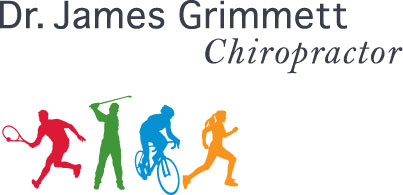The childhood song, “the hip bone is connected to the thigh bone, the thigh bone is connected to the knee bone, the knee bone is connected to…”, holds true for helping to answer this question.
Even though the pain location is different between runner’s knee (patellofemoral pain syndrome) and heel/foot pain attributed to plantar fasciitis they tend to share the same origin as to their cause. The cause being weak hip muscles. Now when I say weak hip muscles I can already hear a number of you saying, “how is this possible? I run and or bike 3-5 times per week.” You may also be getting in the pool regularly for swims if you are a triathlete or Ironman.
One would think that someone doing these activities regularly is strong especially with a sport titled ‘Ironman”. Yes, these athletes are strong in a lot of ways and in fact very strong but the old adage, “you are only as strong as your weakest link” applies here.
Running and cycling are linear activities and as such require a certain amount of strength from the ‘core’ muscles as well as hip muscles to help propel the body forward. If these muscles are not kept strong, or more accurately, strong enough for the physical demand asked upon them this weakness commonly gets expressed in a variety of repetitive strain injuries. The location of the pain can range from the hip to the foot and depends on genetics regarding body type (i.e. wider hips, hip angle…) and developmental patterning. This may be hip or knee pain from iliotibial band syndrome, patellofemoral pain syndrome or runner’s knee, one of several forms of shin splints, achilles tendonitis, and or plantar fasciitis.
In sports that are multidirectional such as basketball, soccer and squash the above listed injuries are significantly less frequent. This is due to the hip and core musculature being more globally strengthened from the sport itself. You can add forms of yoga and martial arts to this list of multidirectional sports. Swimming is a great sport but it is not weight bearing and for this reason does not target the hip muscles well enough.
No, it doesn’t mean every runner (or cyclist) has to take up yoga or badminton to target the muscles that do not get strengthened enough in running. The following exercises ‘done right’ are effective and time efficient. They can easily be incorporated into one’s physical routine and do not require special equipment .
- sideways running (i.e. cross-over running, jumping jacks…) for 2 minutes at the end of a run.
- side leg lifts while lying down on the side. Runner’s and cyclists should easily be able to do 120 reps per side. This may seem a lot but these muscles have a strong endurance roll and if you do the math 120 steps or revolutions on the pedal does not get you down the road too far.
- lunges or one leg squats.
- infant rolling (as in Dynamic Neuromuscular Stabilization exercises).
Unfortunately, life is not always fair. In this case I am referring to benefitting from these exercises. Doing the exercises does not guarantee that the muscles that are being targeted are actually being worked. It is common for the body to compensate when there is weakness. In trying to work the gluteal (buttock) muscles it is possible to do the exercises and yet not benefit from them. The simple way to know if this is the case is that the results are not appreciated within one or two weeks. In this case it is advisable to see a professional who is well versed in diagnosing sports injuries and prescribing corrective exercises. This may be a sports med physician, chiropractor, or physiotherapist. I should add here the importance of diagnosis as there may be something underlying the problem that needs to be addressed before starting corrective exercises.
When the exercises are being done correctly you should feel a sense of increased strength within a short time period. This may be experienced as a sense of ‘lightness’ such as with going up stairs or lifting boxes with less effort. In sports this should be appreciated in better times with your 10k run or Gran Fondo ride.
This article targets injury prevention and sports enhancement. Had I talked about treatment for these injuries, the exercise portion of the rehab would still include similar exercises only the intensity would change. One can look at these exercises as though they are on a continuum starting with rehabilitation, blending into prevention, and finishing on performance enhancement. Only the intensity of the exercise changes.
